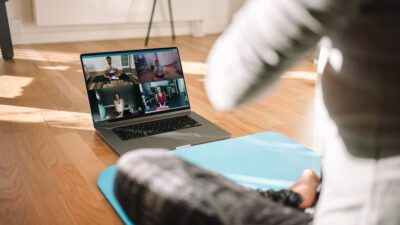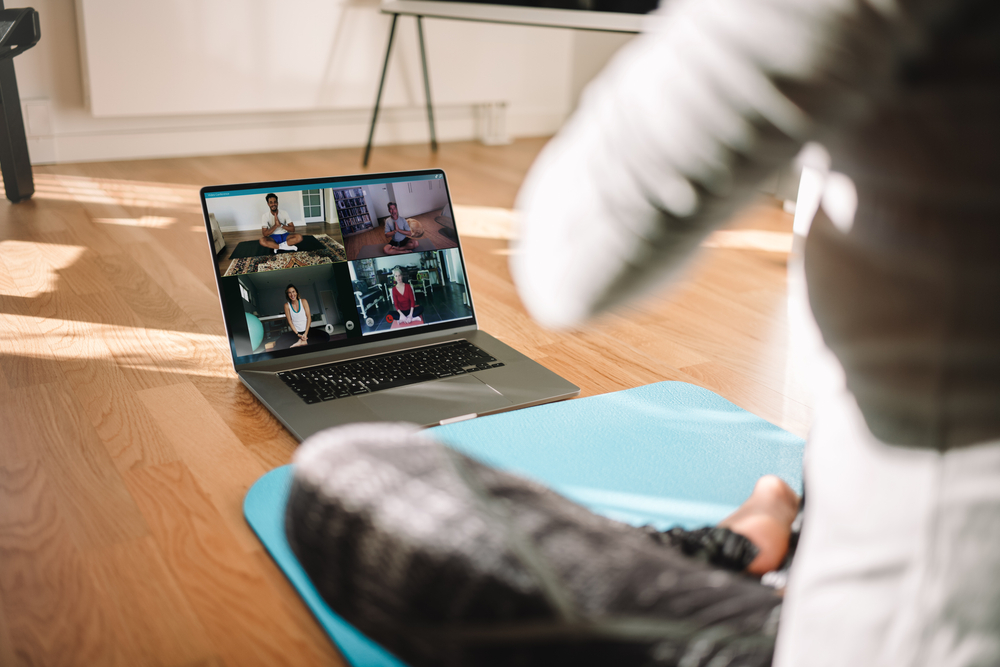



Almost everyone has fitness goals or targets they want to reach, but it’s all too easy to find excuses to carry on with our current unhealthy lifestyles. Maybe you’re too busy to work out every day or live too far away from your nearest gym.
That said, it’s now simpler than ever to find workarounds for those who want to. Virtual fitness is one example. It offers a way to access detailed and high-quality personal training from the comfort of your home – meaning distance and/or time should no longer be barriers to reaching your goals.
In 2020, COVID-19 and the ensuing lockdowns meant all aspects of life migrated online, from virtual call centre software to education and learning. As we’re now seeing across industries, this can have substantial benefits even as we move out of the pandemic.
Virtual fitness is one of these. While most exercise enthusiasts used it as a way to keep up with training when gyms were closed, its flexibility and ease of use mean it’s remained popular.
Just like going to a physical gym, there are many ways to practice virtual fitness. This can include online one-to-one training, group sessions, pre-recorded instruction, or semi-regular consultations with a fitness professional.
However, it’s always done from the comfort of your home. That means no more worries about a venue’s health and safety or lack of privacy, plus the ability to tailor workouts to your schedule and not have to take time out of your busy life to travel to a gym.
The truth is that virtual fitness is for everyone. Many people feel insecure about going to a gym, but working out in your home can help to overcome this. Virtual fitness websites are often specifically designed for accessibility and inclusivity.
However, virtual fitness does suit some people more than others. The convenience of workouts at home means people who struggle to find the time to go to the gym can really benefit from it. It’s also typically more affordable than in-person trainers and doesn’t require a costly gym membership, so if you’ve ever worried about how to balance your health and budget, it’s definitely for you.
You may have already tried home workouts and struggled to find the motivation and confidence to continue working out regularly, but virtual fitness can help by providing a professional guide to support you on your journey.
The different forms of virtual fitness – from pre-recorded or printable instructions to regular, one-to-one workouts – means there’s truly something for everyone.
A virtual one-on-one workout is when you work out at home with an instructor who’s using an online calling platform. The session is specifically tailored to your fitness goals and requirements, with a qualified and experienced professional who can help ensure the correct form, make you feel comfortable with new exercises, and keep you motivated.
Modern online meeting technology is more sophisticated than ever, meaning virtual one-on-one workouts often feel a little different from using a personal trainer in a gym. Most internet professionals will use phone systems in the cloud so it’s easy to set up voice and video calls from anywhere.
Pre-recorded sessions also allow you to access the expertise and motivational skills of a professional personal trainer—but they’re not live. Instead, the virtual fitness instructor will record a video with instructions and tips for you to watch while working out at home.
The upside is that this is often cheaper than a one-to-one session with a personal trainer. It can also offer you greater flexibility to work out when you’re free, regardless of the instructor’s schedule or availability.
Just as gyms have classes, such as spin workouts, many virtual fitness instructors also offer group sessions. These are similar to one-to-one workouts in that they usually involve having an instructor on a video call.
As this is a group activity, they’re less expensive than one-to-one sessions. For many people, working out as part of a group can help with motivation while also introducing a more social element.
If you want to make use of an instructor’s expertise while having full independence and flexibility with regard to your workout schedule, virtual consultations could be ideal for reaching your fitness goals.
These are online meetings with a professional at intervals of your choosing. Meetings can help you develop and stay on top of personal training goals, and you can also ask for advice on workout ideas or nutritional information.
Virtual trainers may use healthcare and life sciences industry solutions to help you on your personal fitness journey and provide a more comprehensive overall service.
Now you know what sort of virtual fitness experience will suit you best, the time has come to find a coach. While this can seem daunting, these tips should help you select the perfect trainer for you.
One of the most important factors in choosing the right professional is working out how much you can afford. Prices are often dependent on the amount of one-to-one time you want, but there are still significant variations between providers.
Plenty of deals can be found if you shop around. If you represent a company, you may want to use a PandaDoc commercial proposal example to suggest a partnership that can bring cheaper deals for employees.
Think about your personal fitness goals. Whether you want to lose weight, build muscle, or just improve general fitness will dictate which provider is best for you.
Research the types of training individual virtual coaches specialise in. Instructors who focus on athlete training, for example, may not be the best fit if you’re looking for generic fitness advice.
Always check the instructor you choose is officially accredited – in the UK, this is usually through organizations such as the NCCA. This ensures your trainer knows their stuff, will keep you safe while exercising, and give good advice.
Any trainer with a modern digital strategy should place their qualifications at the forefront of their online advertising, website, and social media pages – if it’s not clear they’re qualified, find someone else.
The qualifications and certifications held by a virtual fitness instructor can also help you find out their specialisms. If you want the best-possible trainer, look into any additional certifications they may have.
Think about what type of fitness program best suits your goals, schedule, and personal preferences. Some instructors may only offer one-to-one coaching, while others focus on pre-recorded videos.
Different trainers will also have different preferences when it comes to workout types. If you know you prefer high-intensity cardio, for instance, ask if their program includes an option to buy cardio equipment online.
Good communication is even more important for virtual fitness than in-person training, as trainers can’t correct issues with instruction as easily. They need to explain workouts or exercises clearly and thoroughly for you to understand their meaning.
The internet means that finding telephone numbers for businesses is easier than ever so consider calling the trainer and asking for a taster session. This will allow you to see if their communication skills are suited to your goals.
If you’re serious about your fitness goals, you might end up spending a lot of time with your virtual instructor. This means it’s important you find someone you’re compatible with.
On a basic level, you have to like your trainer. However, you should also consider what sort of relationship will best suit your needs. You might work better with an authoritative figure who’ll keep you motivated, as opposed to someone friendlier and more personable.
Alternatively, you might be looking for a mentor. This may apply if you’re hoping for advice about workouts or nutrition or are inexperienced with fitness. Try talking to a range of virtual providers to see who’s most compatible with your personality and goals.
Whatever your ambitions are, virtual fitness can help you reach them. Cheaper than traditional gyms or personal trainers, it allows you to save time while also allowing you to work out from the privacy of your home.
Depending on what you need, virtual fitness can encompass one-to-one and group sessions, pre-recorded or printable activities, or online consultations.
By looking for the most suitable online trainer – e.g by assessing your budget and trainers’ qualifications and compatibility with you and your goals – you can capitalise on the limitless potential of the virtual fitness industry.
No more excuses – start working toward a healthier lifestyle today!